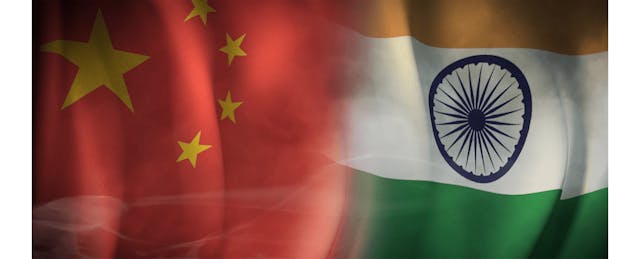For years, China has been sending the greatest number of international students to the U.S. This year, to many people’s surprise, India took the lead.
In fact, the number of U.S. student visas issued to Indians soared 60 percent from Oct 2021 to July 2022, while Chinese student visas—until now at the top—dipped 30 percent. According to the Bureau of Consular Affairs, Indian student visas this year jumped to nearly 78,000, while Chinese student visas fell to just over 46,000.
Worldwide—in the U.K., Canada, and elsewhere—India has surpassed China as the leading source of foreign students. And Coursera, the world’s biggest commercial online learning platform, reports that learners in India constitute its greatest stream of new foreign students.
Doubtless, the decline in Chinese students is mostly the result of the country’s zero-COVID lockdowns and its contentious confrontations with the West.
The change will have a huge impact on many U.S. colleges. After all, more than three million Chinese students enrolled in US higher ed institutions in the last decade alone. Many of those students, educated in the U.S., returned to China to help build their country’s infrastructure and manufacturing power. As a result, China was transformed from a peasant to a middle-class economy in one turbulent, dynamic century.
“Never in history have so many people made so much economic progress in one or two generations,” comments Kenneth Lieberthal at the Brookings Institution.
Mission accomplished, China may have less need for American technical expertise, and it may feel able to go it alone, with its own expanding higher education system, now at the forefront of many key science and technology measures.
At last month's twentieth Chinese Communist Party Congress, Premier Xi Jinping stepped back from his earlier ambition to lead “a diversified and stable international economic system.” In his new China-first posture, Xi called for technical self-sufficiency, signaling that Chinese students may do better to stay home, attending universities in Beijing and Shanghai, rather than fly across the globe to Harvard and Stanford.
That also signals that the flood of Chinese students in the U.S. since the turn of this century may be drying up.
“An American degree became a national obsession,” allowing middle-class kids to escape China’s highly competitive college entrance exam and its rigid curriculum, writes Eric Fish in the China Project newsletter.
Even with its decline in visas this year, though, China is still the heavyweight, with the greatest number of international students in American colleges. More than a quarter of a million Chinese are enrolled in U.S. campuses today.
Impact on U.S. Higher Ed
As China backs away from sending students, American colleges are feeling the financial crunch. After all, tuition from international students from China to U.S. campuses has recently reached about $15 billion annually, representing income from about a third of international students enrolled here. Over the years, American colleges got high on Chinese cash, with Chinese funds often helping to stabilize rocky higher ed finances.
As that flood ebbs, colleges are worrying.
Rahul Choudaha, a senior researcher at the University of California at Berkeley, recently warned that the loss of Chinese students—who often pay top dollar—could be catastrophic for U.S. universities. "Public universities are even more dependent on international students, especially those from China, because of the decline in domestic enrollment and the government's budgetary support," he said.
Chinese tuition has been so crucial at the University of Illinois—which boasts more than 5,000 Chinese students—that the school negotiated an insurance deal that will pay $60 million if revenue from tuition for students from China falls 20 percent or more.
As domestic enrollment in U.S. colleges plunges, college leaders are eagerly looking for students elsewhere to fill the gap. And lately, recruitment teams have been especially keen on India.
Over the last decade, enrollment of international students from India has doubled, with about 1.8 million students from the country showing up on U.S. campuses. India is now the fifth-biggest economy globally, giving Indian families unprecedented purchasing power to send their college-age students overseas. And many colleges in India these days are underfunded or stifled by bureaucracy.
About half of Indian students abroad pursue study in the U.S., often attracted by enticing post-graduate opportunities to work in relatively high-paying jobs—a deciding factor for many Indian students.
For Indian students, America has been a land of opportunity. Indian graduates from U.S. colleges have assumed some of the most powerful jobs in American industry. Most notably in Silicon Valley boardrooms, Indians stand out, holding CEO posts at Microsoft, Alphabet, IBM, Adobe and other big-tech firms.
But despite Indian middle-class enthusiasm for sending their college-age kids to America, India is unlikely to catch up with China’s longtime passion anytime soon, without overcoming a huge gap in the size of their economies. China’s GDP is 15 times greater than India's.
“Western hopes of a modern, fast-growing, prosperous and free market-oriented India have not been realized,” observes Husain Haqqani, director for South and Central Asia at the Hudson Institute. “India’s current rate of economic growth is woefully inadequate for India’s domestic goals as well as the objective of becoming a serious rival to global economic juggernaut, China.”
Some say that India is not only too far behind China in economic power, but also too weak to fill all the seats left vacant by Chinese students foregoing American colleges. But others predict that India’s booming population—set to rise to 1.5 billion in 2030, compared with China’s, which is expected to fall to 1.4 billion in the same period—might do the trick.
But even if the new wave of Indian students goes part of the way to fill the gap left by the Chinese for now, American colleges will continue to be subject to hard-to-predict global political and economic uncertainties that lie ahead.


